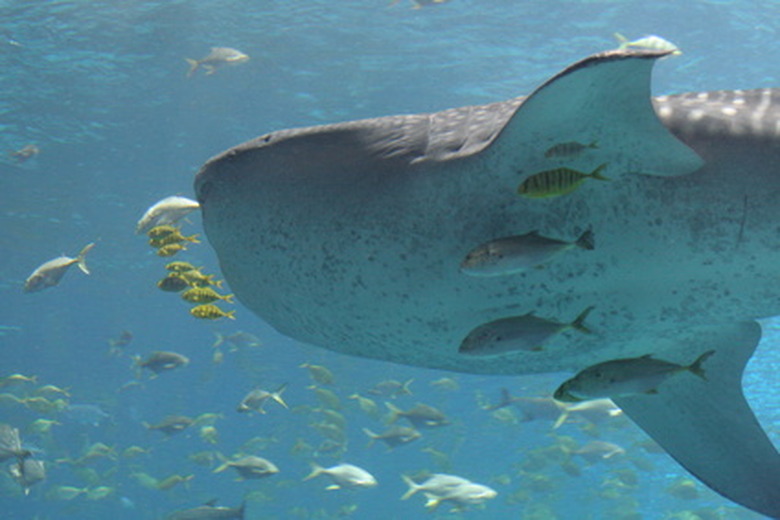Role Of Plankton In An Ecosystem
Plankton are an important food source for organisms in an aquatic environment. They exist in oceans, lakes, rivers, and streams. Algae floating in water is a common and easily found example of plankton. Animals rely on aquatic food sources such as algae to support the food chain.
Oceanic Organisms
Oceanic Organisms
All organisms are separated into two classifications: heterotrophs (organisms that attain energy from other organisms) and autotrophs (organisms that obtain energy from inorganic resources, such as sunlight). Oceanic organisms are no exception. Within the oceanic ecosystem, further distinctions can be made between organisms. Both heterotrophs and autotrophs can be classified as palegic (existing in the water column above the ocean floor) or benthic (existing on the ocean floor).
Pelagic organisms include both nekton (organisms with the ability to swim) and plankton (organisms without the ability to swim).
Plankton
Plankton
Plankton lack any type of self-propelled mobility. The current in the surrounding water propels them. This form of motion helps to disperse the organisms throughout a body of water. Plankton occupy the pelagic zone of the water column, which is named after its pelagic inhabitants.
Plankton may range in size from less than 2 micrometers to organisms larger than 200 micrometers. The category includes many different species of organisms in ocean and freshwater ecosystems. Plankton are divided into phytoplankton and zooplankton. Phytoplankton are photosynthetic and act as the primary producers in an aquatic environment. Zooplankton are heterotrophic and consume smaller plankton.
Phytoplankton
Phytoplankton
Phytoplankton are the primary producers of their environment, meaning they are the first organisms to produce energy, which they create from light sources, such as the Sun. They convert acquired light energy into carbohydrates through photosynthesis. Energy not used by the phytoplankton for maintenance is available as food for the animals that consume it.
Phytoplankton absorb about 3 percent of the light shining on the ocean. By comparison, plants on land absorb about 15 percent of the available sunlight. This discrepancy is caused by the ocean itself, which absorbs sunlight in varying degrees. This competition for vital light resources is a limiting factor for the rate of primary production in aquatic ecosystems.
Zooplankton
Zooplankton
Zooplankton are heterotrophic organisms that consume phytoplankton. According to the biochemist Alfred J. Lotka, this makes them secondary consumers, as their energy is obtained from consuming the primary producers of energy in their environment. As in phytoplankton, some of the energy obtained from their food source is used for maintenance, and the rest is available to the animal that consumes the zooplankton. This may be another zooplankontic organism or a larger animal that grazes on plankton.
Plankton and the Ecosystem
Plankton and the Ecosystem
Plankton's wide range of sizes makes them a beneficial food source for animals and other plankton. Even whale-sharks, one of the largest animals in the ocean, feed primarily on plankton. Filter feeders are the primary consumers of plankton, as they feed by filtering water through their mouths and consume the food that remains. Filter feeders include any number of species, such as fish, mammals, and squid. As the base of the food chain, the balance of energy in aquatic ecosystems is dependent upon the supply of plankton in the pelagic zone of the water column.
Cite This Article
MLA
Jansen, Jim. "Role Of Plankton In An Ecosystem" sciencing.com, https://www.sciencing.com/role-plankton-ecosystem-6461310/. 22 November 2019.
APA
Jansen, Jim. (2019, November 22). Role Of Plankton In An Ecosystem. sciencing.com. Retrieved from https://www.sciencing.com/role-plankton-ecosystem-6461310/
Chicago
Jansen, Jim. Role Of Plankton In An Ecosystem last modified August 30, 2022. https://www.sciencing.com/role-plankton-ecosystem-6461310/
